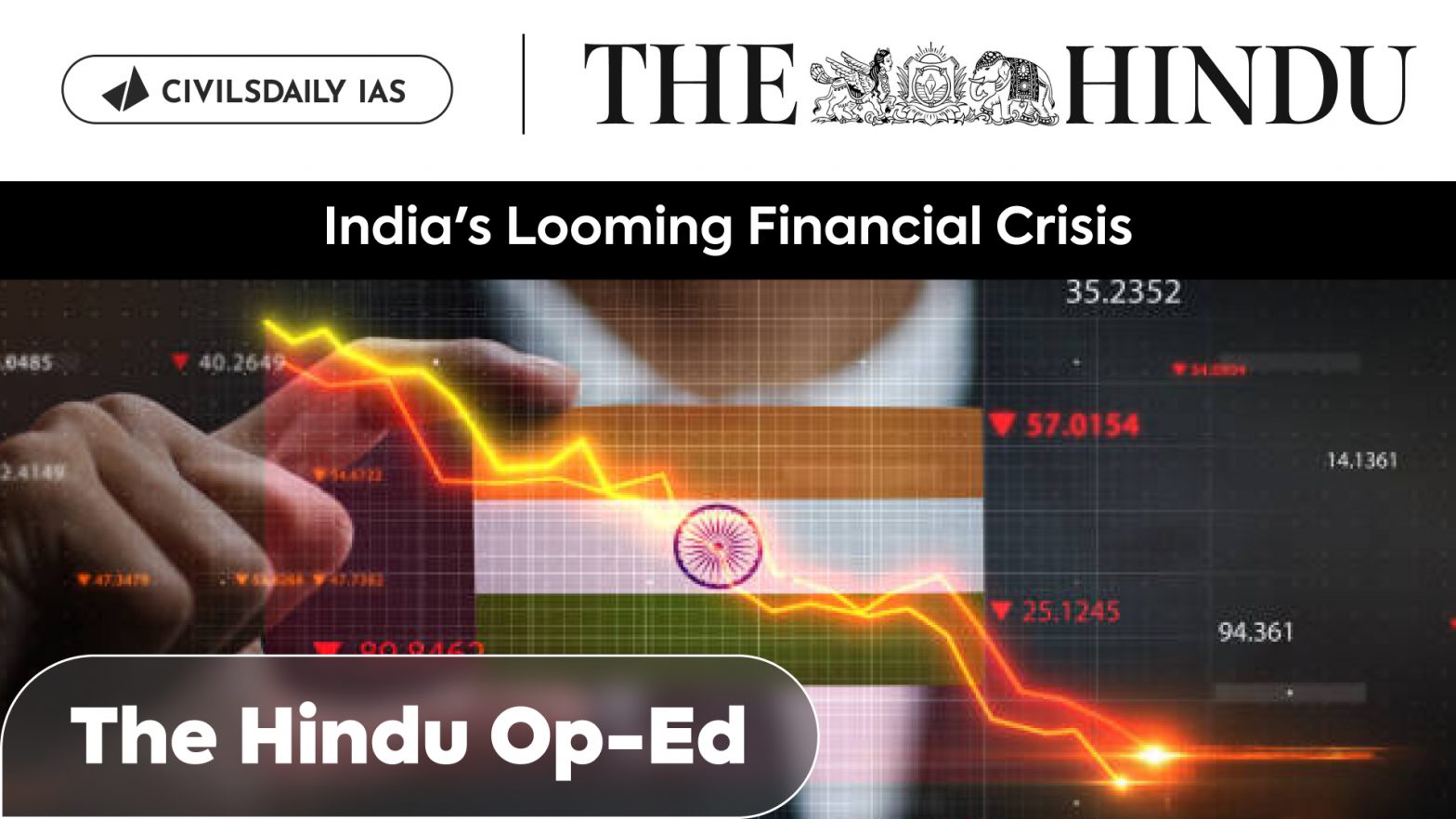| PYQ Relevance: Q. The product diversification of financial institutions and insurance companies, resulting in overlapping of products and services strengthens the case for the merger of the two regulatory agencies, namely SEBI and IRDA. Justify. (UPSC IAS/2013) Q. Industrial growth rate has lagged behind in the overall growth of Gross-Domestic-Product (GDP) in the post-reform period” Give reasons. How far the recent changes in Industrial Policy are capable of increasing the industrial growth rate? (UPSC IAS/2017) |
Mentors’ comment: Rapid credit growth acts like a siren’s call, tempting economies with the allure of prosperity but ultimately steering them toward crises. Every financial boom is packaged as a tale of innovation and good fortune, yet each new narrative is merely a manufactured frenzy. This phenomenon, described by economist Robert Shiller as “irrational exuberance,” is a recurring theme in financial history. As economists Carmen Reinhart and Kenneth Rogoff detailed in their renowned account of financial folly, governments and market players tend to dismiss the lessons of past crises following credit booms, clinging to the belief that “this time is different.”
Let’s learn.
Why in the News?
Rapid credit growth often promises prosperity but frequently leads to crises.These periods are seen as times of innovation and good fortune but often result in “irrational exuberance,” as economist Robert Shiller describes.
A Lofty and Dangerous Narrative about the Indian economy
- Exaggerated Optimism About India’s Performance: Policymakers are excessively optimistic about India’s digital infrastructure as a catalyst for financial innovation and inclusion, promising growth and equality.
- Enabling Poor Financial Practices: The narrative has facilitated a poorly regulated financial sector and led consumers to live beyond their means, generating a lending surge. Both international and domestic analysts have praised the surge, citing robust growth in bank lending and low levels of non-performing assets.
- Misleading Applause: The IMF and National Council of Applied Economic Research have commended the increase in bank lending, particularly personal loans, interpreting it as a sign of bright prospects despite the struggles in industrial lending.
- Ignored Fundamental Issues: The focus on credit growth detracts from addressing deep-rooted issues like job deficits and human capital deficits. The illusion of financial health is maintained as new loans pay off old ones, but this is unsustainable when lending slows.
- Household Debt Boom: The rapid expansion of household lending, between 25% and 30% annually, is viewed as easy cash by lower- and middle-income households for various expenses, including lifestyle spending. This type of boom does not enhance productive capacity but increases domestic prices, making the country less competitive.
- Economic Risks: Economists warn that higher household debt burdens lead to steeper crashes. Alongside the credit boom, factors like an overvalued stock market, weak corporate investment, anaemic consumer spending, an overvalued exchange rate, and dubious data reporting indicate a looming financial crisis.
Challenges related to the financial sector:
- Fragmented Financial Sector: The Indian financial services industry is large and chaotic, with about 30 major providers (scheduled commercial banks and major NBFCs) and thousands of smaller, often dubious, players including fly-by-night NBFCs and fintechs.
- Rogue Behavior and Scams: Major financial institutions have a history of rogue behavior, and the search for easy profits since economic liberalization in 1991 has led to numerous scams. Post-COVID-19, many financial service providers shifted their focus to household lending, often exploiting stagnant incomes.
- Unsecured Lending: A significant and growing share of household loans (approaching a quarter) is unsecured, meaning they are not backed by collateral. The rapid increase in credit card debt exemplifies this trend, with the number of credit cards soaring from 20 million in 2011 to nearly 100 million by January 2024.
- High-Risk Borrowers: Aggressive marketing of credit cards and loans to low-creditworthy individuals has built stress within both the borrower base and the financial system. The Reserve Bank of India has noted that the explosive growth of credit cards has attracted riskier, below-prime borrowers.
- Debt Addiction and Financial Strain: Many households, lured by rewards and “no-interest EMIs,” are falling into debt traps, taking on more debt to repay existing dues, exacerbating their financial strain. The high household debt-service-to-income ratio (12%) is among the highest globally, comparable to pre-2008 crisis levels in the US and Spain.
Solution (Way Forward)
- Surgically Downsize the Financial Services Industry: The financial services industry needs to be resized to better align lending capacity with productive borrowing needs. This would involve reducing the number of financial providers and ensuring that loans are directed towards projects that enhance productivity.
- Weaken the Rupee: A weaker rupee could help expand exports, providing a buffer against the economic downturn. By making Indian goods cheaper abroad, a weaker rupee could stimulate demand for exports.
- Preventing Rapid Credit Growth: Historical evidence indicates that rapid credit growth combined with an overvalued exchange rate is dangerous. Measures should be taken to moderate credit growth to sustainable levels.
- Shift in Policy Perspective: There is a need to move away from the current belief that finance alone can spur growth. Instead, policies should focus on sustainable growth supported by finance, aligning with Joan Robinson’s dictum that finance must follow growth.
- Addressing Overvalued Exchange Rate: Policymakers need to reconsider their commitment to maintaining a strong exchange rate. A more flexible exchange rate policy could better reflect economic fundamentals and support external competitiveness.
- Focus on Employment and Human Capital: The acute job shortage and regression of the workforce back to agriculture highlight the need for policies that generate employment and improve human capital. Investments in education, skills development, and public goods are essential.


